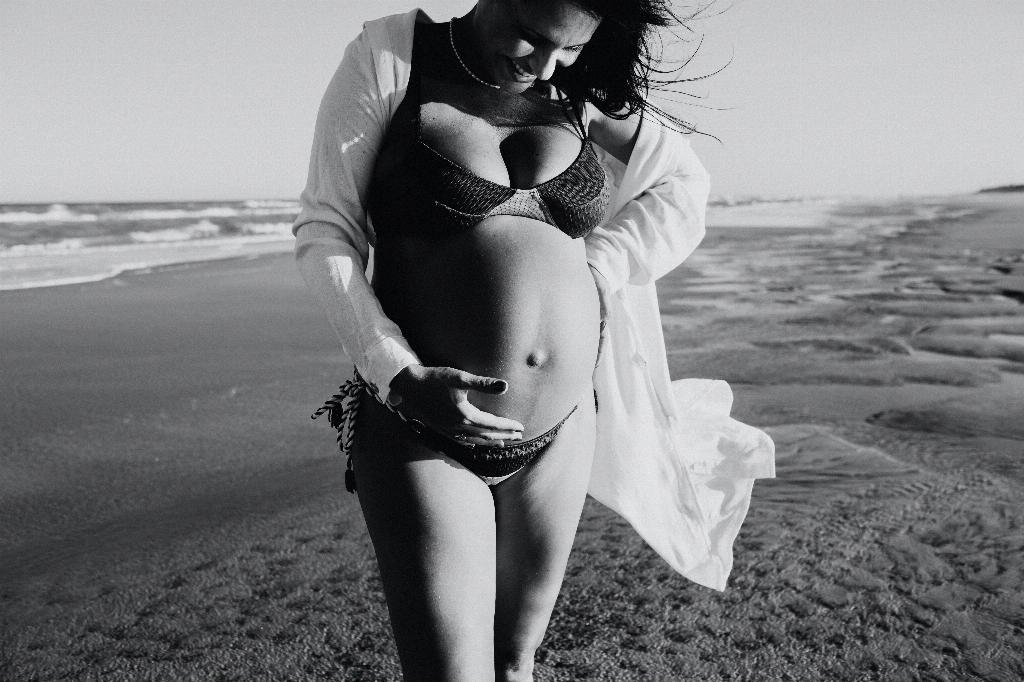During pregnancy, it is not uncommon for many women to experience pain in their pubic bone. This discomfort is often due to a condition called Symphysis Pubis Dysfunction (SPD), which occurs when the pelvic joints become stiff and move less evenly. The pelvis becomes less stable, leading to inflammation and pain in the pubic bone.
One of the main reasons for pubic bone pain during pregnancy is the added weight of the growing baby. As the baby grows, the extra weight puts increased pressure on the pelvis, causing the joints to bear more weight than usual. This can lead to discomfort and pain in the pubic bone area.
Changes in posture and the way you sit or stand during pregnancy can also contribute to pubic bone pain. As your body adjusts to accommodate the growing baby, your center of gravity shifts, putting additional strain on the pelvis and surrounding muscles. This shift in weight distribution can result in discomfort and pain in the pubic bone.
Furthermore, hormonal changes during pregnancy can also play a role in causing pubic bone pain. The hormone relaxin, produced in higher levels during pregnancy, helps to relax the ligaments in the pelvic area in preparation for childbirth. However, this increased laxity can lead to instability in the pelvic joints, contributing to pain in the pubic bone.
Engaging in activities that involve repetitive movements or heavy lifting during pregnancy can exacerbate pubic bone pain. Overexerting yourself or performing strenuous activities that strain the pelvic joints can worsen existing discomfort and lead to increased pain in the pubic bone area.
Seeking proper prenatal care and guidance from healthcare professionals is essential in managing pubic bone pain during pregnancy. Physical therapy, pelvic support belts, and gentle exercises can help to alleviate discomfort and improve pelvic stability. It is important to consult with your healthcare provider to develop a personalized treatment plan that addresses your specific needs.
Practicing good posture and maintaining proper body mechanics can also help reduce pubic bone pain. Avoiding activities that place excessive strain on the pelvis and practicing safe lifting techniques can prevent further discomfort in the pubic bone area.
Using supportive pillows and cushions when sitting or lying down can help relieve pressure on the pelvis and reduce pubic bone pain. Finding comfortable positions that alleviate discomfort and support the pelvis can improve overall comfort during pregnancy.
Staying active with low-impact exercises such as swimming or prenatal yoga can strengthen the muscles supporting the pelvis and improve pelvic stability. Gentle stretching exercises can help alleviate tension and improve flexibility, reducing the likelihood of experiencing pubic bone pain.
Avoiding prolonged standing or sitting in one position can prevent aggravating pubic bone pain. Taking breaks to change positions, stretch, or walk around can alleviate pressure on the pelvis and reduce discomfort in the pubic bone area.
Practicing relaxation techniques such as prenatal massage or meditation can help reduce stress and tension in the pelvic area, promoting relaxation and comfort. Managing stress levels and finding ways to unwind can contribute to overall well-being during pregnancy.
In conclusion, pubic bone pain during pregnancy is a common issue that can be attributed to various factors such as pelvic joint changes, weight gain, hormonal fluctuations, and physical activities. By understanding the causes of pubic bone pain and implementing strategies to manage discomfort, you can enhance your comfort and well-being throughout pregnancy.

